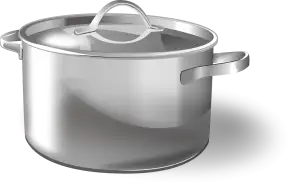Discover the Exquisite Flavors of the Makanai: A Culinary Journey Through Authentic Recipes

- History of the makanai: Tracing the roots of this traditional Japanese tradition
- The makanai experience: Discovering the authentic flavors and techniques behind this renowned cuisine
- Signature makanai dishes: Exploring the must-try dishes that showcase the essence of this culinary style
- Makanai recipes: Step-by-step instructions to recreate the makanai magic in your own kitchen
- Tips and tricks for mastering makanai cooking: Expert advice to elevate your makanai culinary skills
- The makanai in popular culture: Exploring the influence of makanai on contemporary food trends
The makanai is a fascinating culinary concept that originated in Japan. It refers to the meals prepared by geisha and maiko (apprentice geisha) for themselves and their staff. This tradition dates back centuries and holds great significance in Japanese culture. The makanai showcases the resourcefulness and creativity of these women, as they had to work with limited ingredients and create delicious meals. Today, the makanai continues to captivate food enthusiasts with its unique flavors and techniques. Join us on a culinary journey as we delve into the origins and significance of this extraordinary tradition.
History of the makanai: Tracing the roots of this traditional Japanese tradition
The makanai tradition has deep roots in Japanese culture, dating back centuries. It originated during the Edo period (1603-1868), when it was common for feudal lords and samurai households to employ cooks known as "makanai" to prepare meals for their families and retainers. These skilled culinary experts were responsible for creating delicious and nourishing dishes using limited ingredients.
The term "makanai" itself translates to "inside the curtain," referring to the practice of cooking behind closed doors within the confines of the household. This exclusivity added an air of mystery and prestige to the makanai profession.
During this period, Japan experienced a strict social hierarchy, and food played a crucial role in distinguishing one's status. The makanai were entrusted with the task of providing high-quality meals that showcased the wealth and power of their employers.
As time went on, the makanai tradition expanded beyond noble households to include tea houses, geisha establishments, and even imperial palaces. The skills and techniques passed down through generations became synonymous with refined taste and meticulous attention to detail.
Today, while the social structure has evolved, the essence of makanai cooking remains intact. It continues to be celebrated as a symbol of Japanese culinary heritage, preserving age-old recipes and techniques that have stood the test of time. Tracing its roots back through history allows us to appreciate how this traditional tradition has shaped modern Japanese cuisine into what it is today.
The makanai experience: Discovering the authentic flavors and techniques behind this renowned cuisine
The makanai experience takes you on a journey to discover the authentic flavors and techniques behind this renowned cuisine. Each dish is meticulously prepared with utmost care, using only the freshest ingredients. The emphasis is on simplicity, allowing the natural flavors to shine through. From delicate broths to perfectly seasoned vegetables, every bite is a revelation. The makanai experience is not just about the taste, but also about the artistry and mindfulness that goes into each dish. It's a culinary adventure that will leave you craving for more.
Signature makanai dishes: Exploring the must-try dishes that showcase the essence of this culinary style
When it comes to signature makanai dishes, there are a few that truly showcase the essence of this unique culinary style. One such dish is "Chirashi-zushi," a colorful bowl of sushi rice topped with a variety of fresh sashimi, vegetables, and pickles. The combination of flavors and textures in this dish is simply exquisite.
Another must-try makanai dish is "Oyakodon," which translates to "parent and child bowl." This comforting dish consists of simmered chicken and onions served over a bed of fluffy rice, topped with a lightly beaten egg. The rich umami flavors and silky texture make it a true delight.
Lastly, "Nikujaga" is a hearty stew made with thinly sliced beef, potatoes, carrots, and onions cooked in soy sauce and mirin. This comforting one-pot dish embodies the essence of makanai cuisine - simple yet flavorful ingredients cooked to perfection.
These signature makanai dishes not only tantalize the taste buds but also offer a glimpse into the rich culinary heritage of Japan.
Makanai recipes: Step-by-step instructions to recreate the makanai magic in your own kitchen
Makanai Recipes: Step-by-step instructions to recreate the makanai magic in your own kitchen
1. Miso Soup: Start by heating dashi stock and adding miso paste. Stir until dissolved. Add tofu, seaweed, and green onions. Simmer for a few minutes and serve hot.
2. Tempura: Prepare a batter using flour, ice-cold water, and egg yolk. Dip vegetables or seafood in the batter and deep-fry until golden brown. Serve with dipping sauce.
3. Chawanmushi: Beat eggs with dashi stock, soy sauce, and mirin. Strain the mixture and pour into small bowls with ingredients like shrimp, mushrooms, or chicken. Steam for 10-15 minutes until set.
4. Sukiyaki: Heat a skillet with oil and sauté thinly sliced beef until browned. Add vegetables like onions, mushrooms, and tofu. Pour in a mixture of soy sauce, sugar, mirin, and sake. Simmer until cooked through.
5. Soba Noodles: Cook soba noodles according to package instructions. Rinse under cold water to remove starchiness. Serve chilled with a dipping sauce made from soy sauce, mirin, sugar, and grated daikon radish.
6. Onigiri: Cook short-grain rice and let it cool slightly. Wet hands with saltwater to prevent sticking and shape rice into triangles or balls with fillings like pickled plum or grilled salmon inside.
Follow these recipes to experience the authentic flavors of makanai cuisine right in your own kitchen!
Tips and tricks for mastering makanai cooking: Expert advice to elevate your makanai culinary skills
Here are some expert tips to help you master the art of makanai cooking and elevate your culinary skills.
1. Embrace simplicity: Makanai is all about using minimal ingredients to create maximum flavor. Focus on quality ingredients and let their natural flavors shine through.
2. Master knife skills: Precise knife work is essential in makanai cooking. Practice your cutting techniques to ensure uniformity in size and shape, which enhances both the presentation and taste of the dish.
3. Pay attention to seasoning: Makanai cuisine relies on balance and harmony in flavors. Experiment with different combinations of soy sauce, mirin, sake, and dashi to achieve the perfect umami taste.
4. Perfect rice preparation: Rice is a staple in makanai cooking, so mastering the art of cooking fluffy, sticky rice is crucial. Rinse the rice thoroughly before cooking and follow precise measurements for water-to-rice ratio.
5. Explore traditional cooking methods: Makanai dishes often involve simmering, grilling, or steaming techniques. Familiarize yourself with these methods to bring out the authentic flavors of makanai cuisine.
6. Garnish with finesse: The presentation of makanai dishes is as important as their taste. Learn how to garnish your dishes with precision using fresh herbs, edible flowers, or artistic vegetable carvings.
7. Experiment with local ingredients: While staying true to tradition, don't be afraid to incorporate local ingredients into your makanai recipes for a unique twist that reflects your own culinary heritage.
By following these expert tips, you can enhance your makanai culinary skills and create truly exquisite dishes that capture the essence of this remarkable cuisine
The makanai in popular culture: Exploring the influence of makanai on contemporary food trends
The makanai has not only left a mark on traditional Japanese cuisine but has also made its way into popular culture and contemporary food trends. Its emphasis on using locally sourced ingredients, minimizing waste, and creating flavorful dishes has resonated with chefs and food enthusiasts around the world. Many restaurants now incorporate makanai-inspired dishes on their menus, showcasing the simplicity and elegance of this culinary style. Additionally, the concept of makanai has influenced the farm-to-table movement, encouraging a closer connection between producers and consumers. The makanai's focus on sustainability and mindful cooking has also inspired home cooks to adopt similar practices in their kitchens, leading to a greater appreciation for local ingredients and reducing food waste. As we continue to explore new flavors and culinary experiences, the influence of makanai will undoubtedly continue to shape contemporary food trends for years to come.
In conclusion, the makanai has left an indelible mark on the culinary world. Its enduring legacy can be seen in the appreciation for authentic flavors and techniques that it has instilled in chefs and food enthusiasts alike. The makanai's emphasis on simplicity, seasonality, and respect for ingredients continues to inspire chefs around the globe. Its impact can be felt in the growing trend of farm-to-table dining and the resurgence of traditional cooking methods. As we reflect on the exquisite flavors and cultural significance of the makanai, we are reminded of its timeless appeal and its ability to transport us on a culinary journey like no other.
Published: 16. 12. 2023
Category: Recipes



